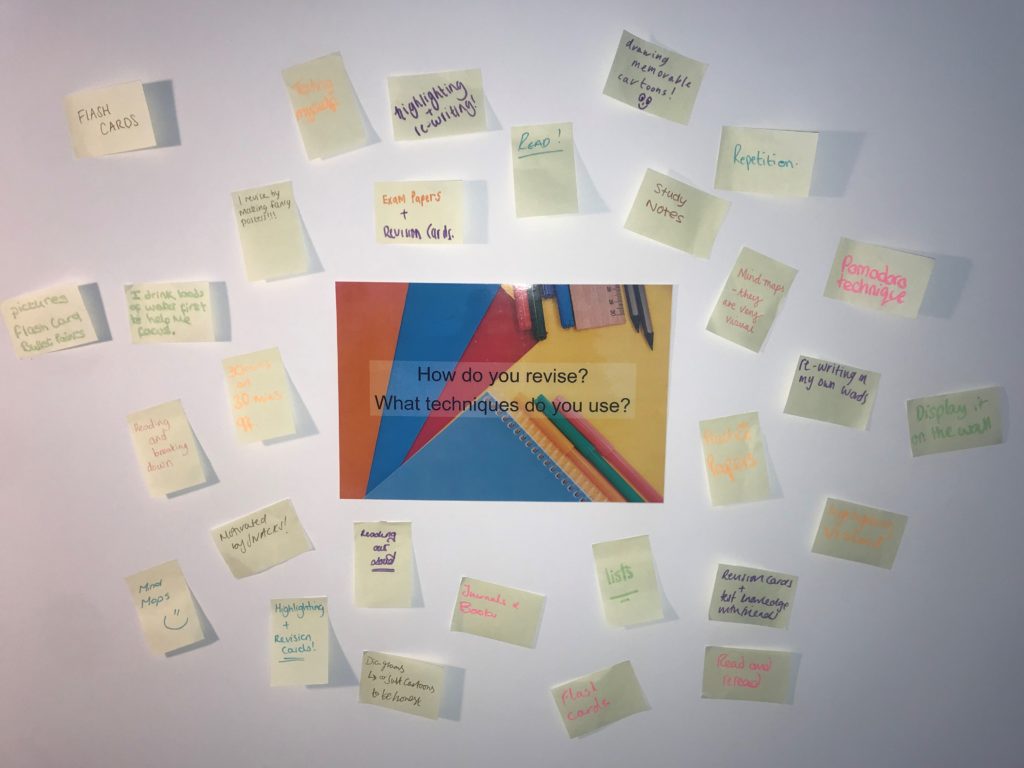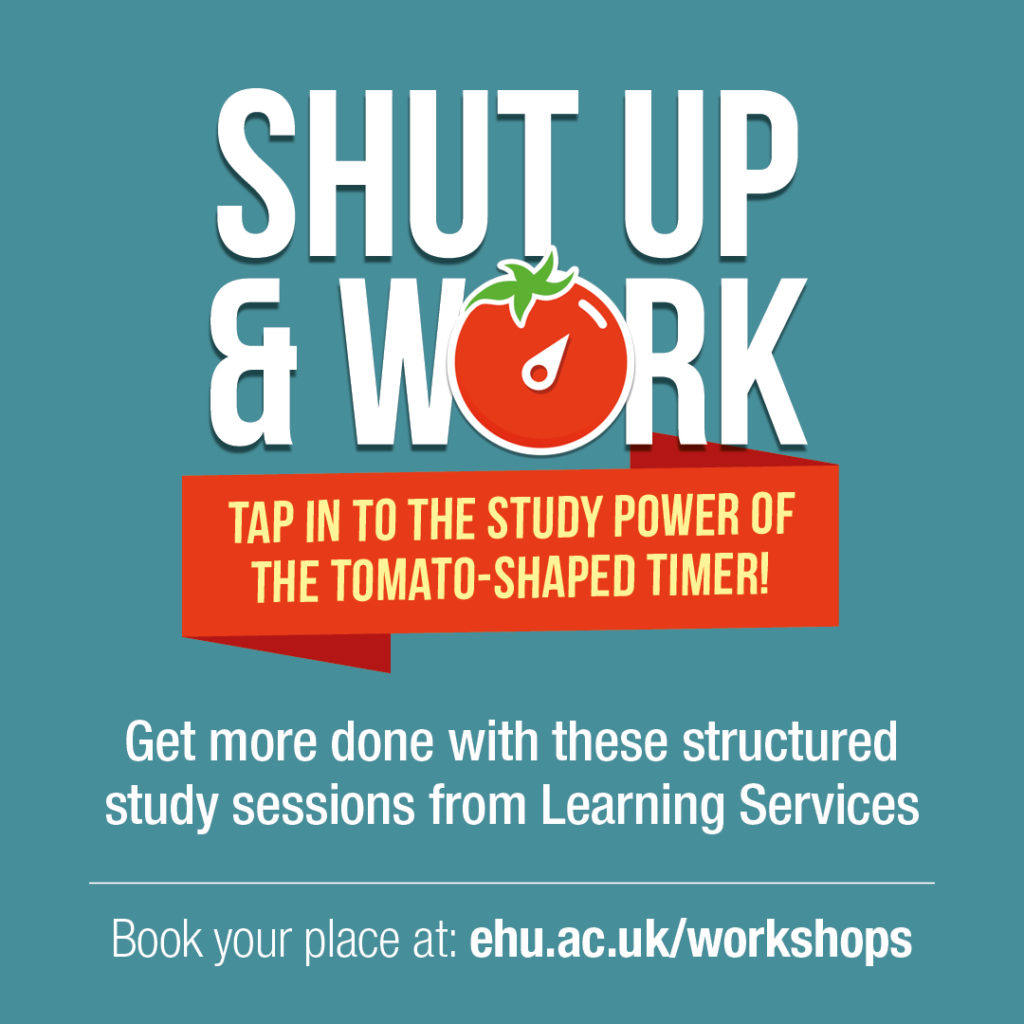During Study Happy Week Learning Services asked students to write on a sticky note how they learn and what techniques they may use when studying or revising. There are three core types of learners these are visual, auditory and kinaesthetic. We discovered that there were many types of learners at Edge Hill University. Here are some of their Revision and Study Techniques.
Display It On A Wall
This means that by drawing a poster or putting information in plain sight on a wall you are able to take it in and study it, this is a key way to study if you are a visual learner.
Pictures & Diagrams
Revising by looking at pictures and diagrams helps you to break down and understand key information and concepts. You can do this by using pictures or diagrams online, drawing your own, or by copying out certain pictures and images from textbooks you may have used.
Drawing Memorable Cartoons
This is a quirky and fun way to be able to remember information. Some people are able to transfer written information into images and drawings and cartoons which allows them to be able to creatively take in information.
Visuals (Mind Maps, Diagrams & Flowcharts)
Many people use some form of visual aid when studying, whether it’s copying out pictures, making flowcharts or even making colourful posters which are all an easy and often fun way to revise, and you can often link this to the first method of studying which was displaying it on a wall.
Flashcards
We found that this was a very popular choice of study here at Edge Hill. Flash cards are perfect for copying down relevant and short pieces of information relevant to your topic. Also, you’re able to get them in several colours allowing you to categorise them easily.
Repetition
Repetition is also a very popular method of study, as it allows you to practise and understand information until you remember it clearly, this is often used in relation to the two point above flashcards and studying with friends. By writing out and rereading information it allows, you to eventually remember it and this can be very useful in exam situations.
Bullet Points
Bullet points are the perfect way to revise, you are able to grab core ideas, concepts and keywords from large passages of information and break it down into simple points via bullet points. Excellent if you find working with lots of information difficult and overwhelming.
Highlighting
At some point in a student’s academic lifetime they will have used a highlighter, and for some people they find this a useful way of pointing out key ideas and words in text. Using a highlighter enables you to visually see key points quickly and easily without having to reread bulks of information.
Read & Reread
Although some students may think this seems like a boring and tedious way of revising some people learn by reading information and then rereading that information until they understand it and remember it.
Reading Journals & Books
This can relate to the point above. Often reading information from a variety of books and journals can help you study and understand information clearer by reading information from several viewpoints. This enables you to be able to understand information clearly before entering an exam or explaining information in assignments.
Reading & Breakdown Notes
Following on from the two points located above is reading and breaking down information in order to study. Although some people study and revise well by reading excessive amounts of information, some people revise better by reading information and then making notes in order to break down that information and take it in better.
Lists
Often when making notes people like to revise them by putting information into lists of information or making to do lists when studying so you know what topics you may need to revise for.
Practise Papers for Exams
Another very common way to study especially if you are studying for exams is by practising past exam papers from previous years. So, this allows you to be able to understand the format and layout of exams so that you know what to expect. You can often find these online.
Pomodoro Technique
The Pomodoro Technique is a way of managing your time productively by studying in intervals, for example you would study for 30 minutes and then have a 15 minute break, maybe a drink and a snack and then you would return to studying for a further 30 minutes followed by another break. This help to stimulate focus and allows you to be more productive when studying, when you know you are being rewarded with a break. In the upcoming weeks Learning Services will be offering a “Shut Up and Work” workshop, it will be a 2-hour work shop where you can bring your own work and you will be following the Pomodoro technique. There will be refreshments available. You can book this online via the ‘My Library’ tab on Learning Edge.
Motivated by Snacks
Some students said that they were motivated by food. This again would link nicely into the Pomodoro technique. Perhaps boil the kettle and have some snacks ready for your break, take a short break and then return to work.
Drink Water To Help Focus
Some students suggest drinking lots of hydrating fluids before studying allowed them to be able to study harder for longer and enabled them to remain focused throughout revising.
So why not try a few of the techniques mentioned above and see if they could help you when it comes to studying and revising for upcoming exams and don’t forget you can always book onto one of our upcoming workshops.
2nd Year International Business Student
Student Advisor for Library & Learning Services






